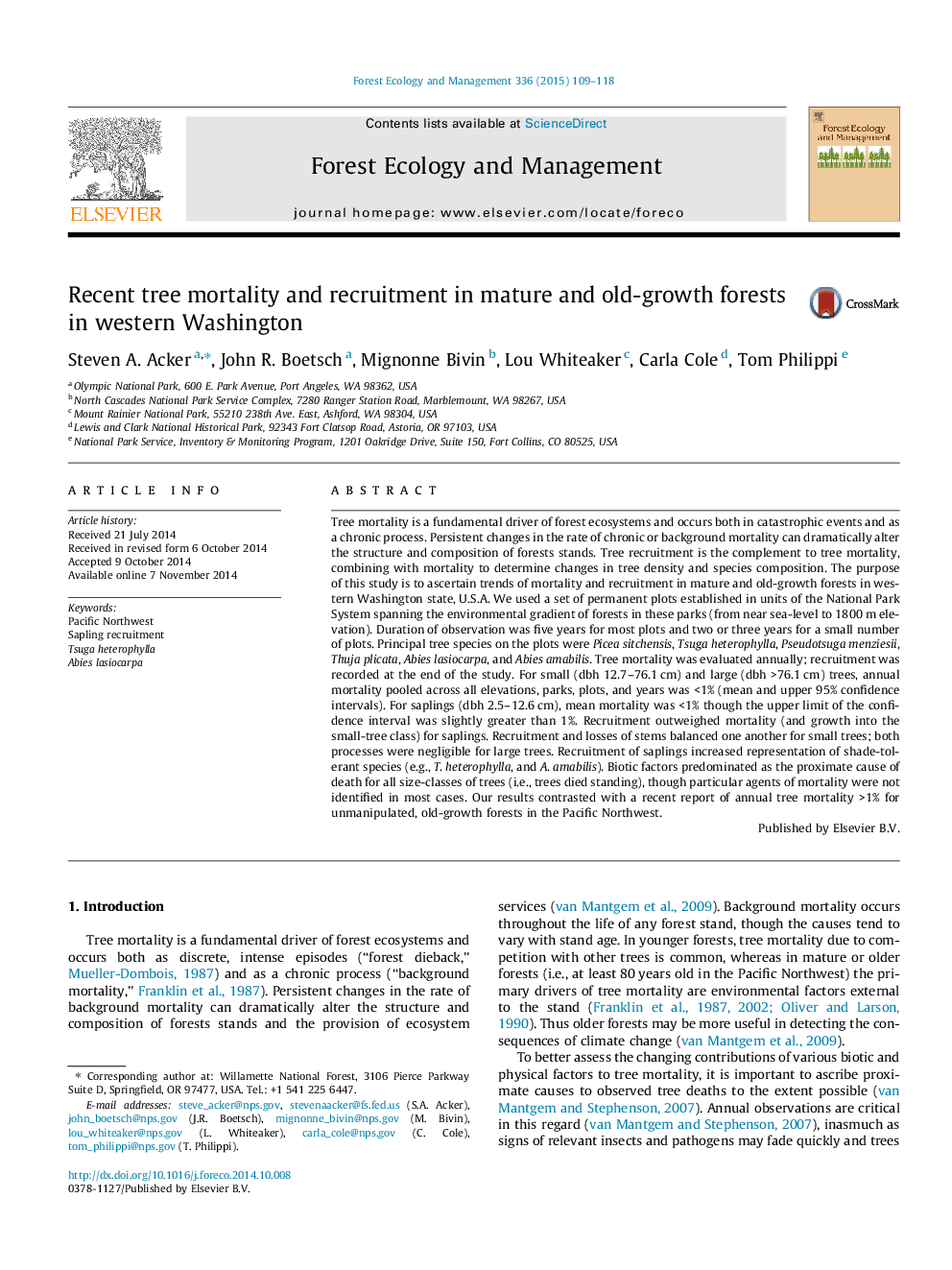| کد مقاله | کد نشریه | سال انتشار | مقاله انگلیسی | نسخه تمام متن |
|---|---|---|---|---|
| 86422 | 159187 | 2015 | 10 صفحه PDF | دانلود رایگان |
• We studied tree mortality and recruitment in mature and old-growth forests.
• We established 45 permanent plots from sea-level to 1800 m in western Washington.
• Annual mortality was generally within the expected range of up to 1%.
• Recruitment exceeded mortality for saplings, increasing shade-tolerant species.
• Biotic factors predominated as the proximate cause of death for trees of all sizes.
Tree mortality is a fundamental driver of forest ecosystems and occurs both in catastrophic events and as a chronic process. Persistent changes in the rate of chronic or background mortality can dramatically alter the structure and composition of forests stands. Tree recruitment is the complement to tree mortality, combining with mortality to determine changes in tree density and species composition. The purpose of this study is to ascertain trends of mortality and recruitment in mature and old-growth forests in western Washington state, U.S.A. We used a set of permanent plots established in units of the National Park System spanning the environmental gradient of forests in these parks (from near sea-level to 1800 m elevation). Duration of observation was five years for most plots and two or three years for a small number of plots. Principal tree species on the plots were Picea sitchensis, Tsuga heterophylla, Pseudotsuga menziesii, Thuja plicata, Abies lasiocarpa, and Abiesamabilis. Tree mortality was evaluated annually; recruitment was recorded at the end of the study. For small (dbh 12.7–76.1 cm) and large (dbh >76.1 cm) trees, annual mortality pooled across all elevations, parks, plots, and years was <1% (mean and upper 95% confidence intervals). For saplings (dbh 2.5–12.6 cm), mean mortality was <1% though the upper limit of the confidence interval was slightly greater than 1%. Recruitment outweighed mortality (and growth into the small-tree class) for saplings. Recruitment and losses of stems balanced one another for small trees; both processes were negligible for large trees. Recruitment of saplings increased representation of shade-tolerant species (e.g., T. heterophylla, and A. amabilis). Biotic factors predominated as the proximate cause of death for all size-classes of trees (i.e., trees died standing), though particular agents of mortality were not identified in most cases. Our results contrasted with a recent report of annual tree mortality >1% for unmanipulated, old-growth forests in the Pacific Northwest.
Journal: Forest Ecology and Management - Volume 336, 15 January 2015, Pages 109–118
